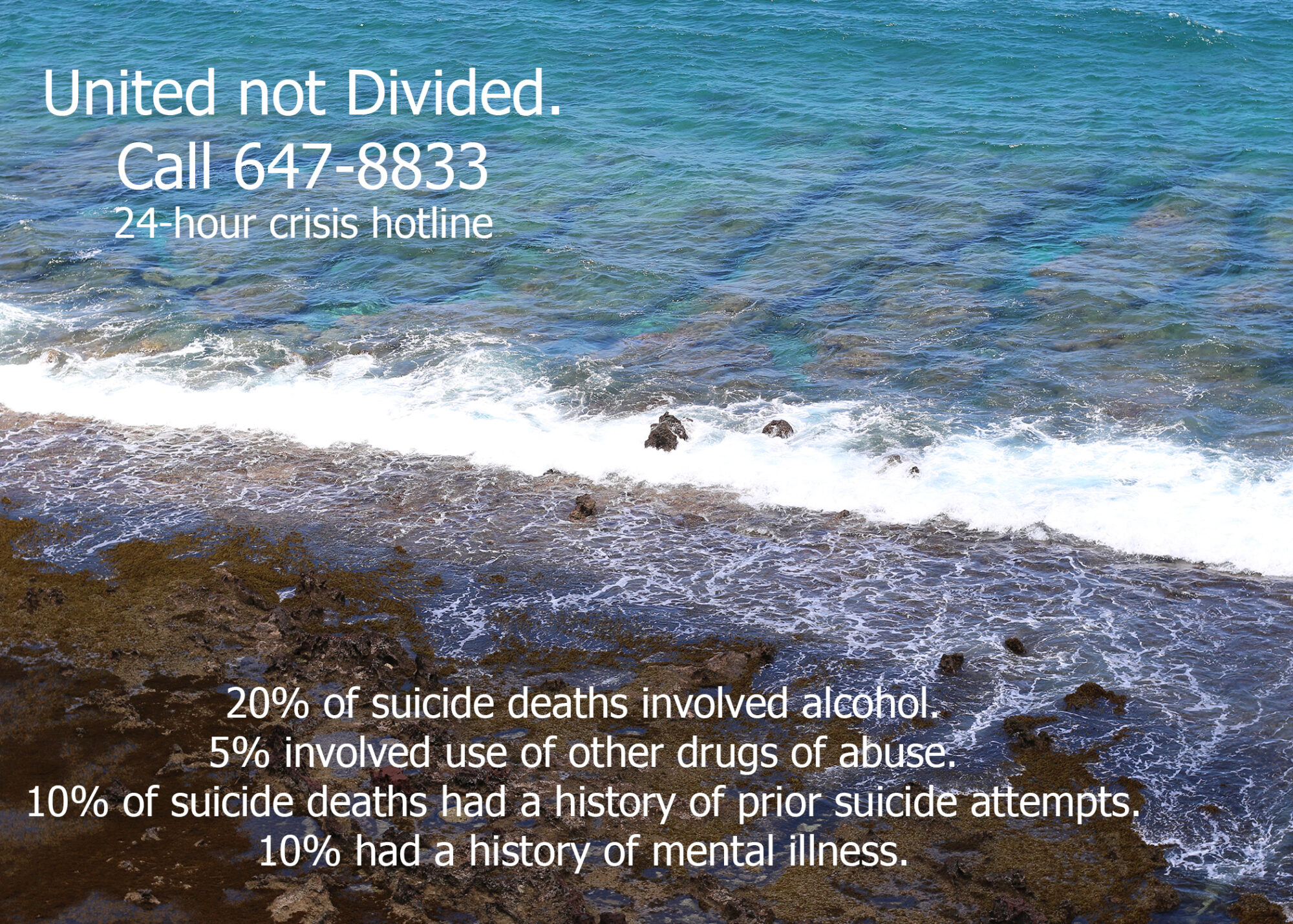In 2005 the University of Guam established a campus suicide prevention program called I Pinangong, which means “awakening” in CHamoru. I Pinangon translates the programs goal to raise awareness of the problem of suicide on campus and in the local community.
Suicide is the fifth leading cause of death on Guam. According to I Pinangon, data from 2014 shows the rate of local suicide incidence to be 21 deaths per 100,000 in the population. Compared to the rate of suicide the U.S. mainland at 13 deaths per 100,000, the local rates are significantly higher.
I Pinangong strives to decrease the presence of suicide through community presentations, campus outreach and additional suicide prevention services. These services are available to the students, faculty staff and the local community.
The program regularly conducts activities.
The program primarily hosts gatekeeper presentations in classrooms around campus.
FY101 professors usually requests for these presentations to be held in their classroom at the beginning of the semester. These presentations are usually targeted at the introductory courses each semester. Students are educated about the warning signs of suicide and risk factors.
Gatekeepers also include coping strategies to help students in their daily lives. These presentations are beneficial to have in the classroom because students can identify with the warning signs and seek help.
I Pinagong also provides services to the community. Sometimes they will help families coping with the loss of a loved one to suicide through postventions. They help the families process the effects of a suicide.
The program focuses on building awareness of suicide on campus and extend this awareness out to the community.
One of I Pinangong’s most popular events is a suicide prevention program forum held in September, Suicide prevention month at the UOG CLASS Lecture Hall. At the forum issues surrounding suicide is addressed by panelists in a discussion based style. Members of the community are welcome to attend this free public event. Over the past few years, numbers in attendance has increased.
Mayumi Krause, head program assistant of I Pinangong, said: “Suicide is a touchy subject and there is still a lot of stigma surrounding it but we have seen year to year that people are more willing to talk about it. ”
Some professors also advertise the event in their classes and encourage their students to attend.
Peace office members highlight updates suicide stats at this event. A keynote speaker also gives a talk on suicide prevention and their personal experiences.
Panel members introduce themselves and their role in the community. Then members of the audience are welcome to ask questions.
I Pinangong regularly hosts outreach activities weekly where they focus on various mental health-related activities.
The worry box activity allows students to write a worry into the box anonymously and this allows them to set that worry aside for the time being. In a weeks time they come back to the worry and reevaluate the outcomes of that worry.
Another activity is the little things activity where students and faculty wrote down a coping strategy that they use to alleviate their stress and anxiety on a board. Some of these coping strategies could range from running to listening to music. After they post their coping strategy on the board, they take another one and try it out for themselves as a coping skill.
I Pinangong tries to do two to three different outreach campaigns throughout the semester.
Additionally I Pinangong can refer individuals who know someone who is thinking of suicide to ISA psychological services, the mental health facility on campus at the University of Guam that is available to students, staff and community members.
Periodically, I Pinangong may host trainings on SafeTalk, a half-day training on suicide prevention. This alertness training is for participants age 15 and older to become a suicide alert helper. participants are trained to recognize signs of suicide and the actions to take to connect victims with life saving intervention resources.
Through educating the campus community about suicide prevention measures and practices.
In addition to the presence of suicide prevention through the I Pinangong program on campus, a Suicide Prevention and Response Protocol for the staff and faculty of the University of Guam has been created last academic school year.
I Pinangong aims to host trainings and presentations on this response protocol in each school to spread the awareness of suicide prevention on campus.
All these efforts help to spread the awareness of the problem of suicide not only on campus but also to the local community.


